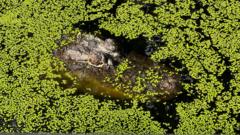Across America, cemeteries are evolving from traditionally manicured resting places to vibrant ecosystems, embracing a new naturalistic approach to landscaping. This shift, accelerated by changes in visitation habits during the pandemic, is seen in Catholic and Jewish burial sites, along with expansive private graveyards, creating a blend of remembrance and conservation.
Revitalizing Rest: America’s Cemeteries Go Green

Revitalizing Rest: America’s Cemeteries Go Green
Cemeteries embrace nature, replacing manicured lawns with wildflowers, encouraging wildlife habitats as pandemic-induced visitors seek solace outdoors.
Groundskeepers and horticulturists are adopting sustainable practices, allowing grasses to grow longer, minimizing mowing, and replacing invasive plant species with native flora. They are also forgoing pesticides, promoting habitats that benefit local wildlife and enhance the visitor experience. Historic sites like Green-Wood Cemetery in Brooklyn have transformed key areas into beautifully diverse meadows filled with drought-resistant wildflowers and shrubs.
The pandemic has significantly increased foot traffic in such serene places, with Green-Wood welcoming over 200,000 new visitors who now appreciate the natural beauty of these spaces. "We’ve seen a huge sea change in terms of people’s willingness to accept this," remarked Joseph Charap, Green-Wood’s horticulture vice president. This transformative approach signifies a deeper connection between visitors and nature, suggesting that America's cemeteries may redefine their role as vital public green spaces for reflection and tranquility.
The pandemic has significantly increased foot traffic in such serene places, with Green-Wood welcoming over 200,000 new visitors who now appreciate the natural beauty of these spaces. "We’ve seen a huge sea change in terms of people’s willingness to accept this," remarked Joseph Charap, Green-Wood’s horticulture vice president. This transformative approach signifies a deeper connection between visitors and nature, suggesting that America's cemeteries may redefine their role as vital public green spaces for reflection and tranquility.



















